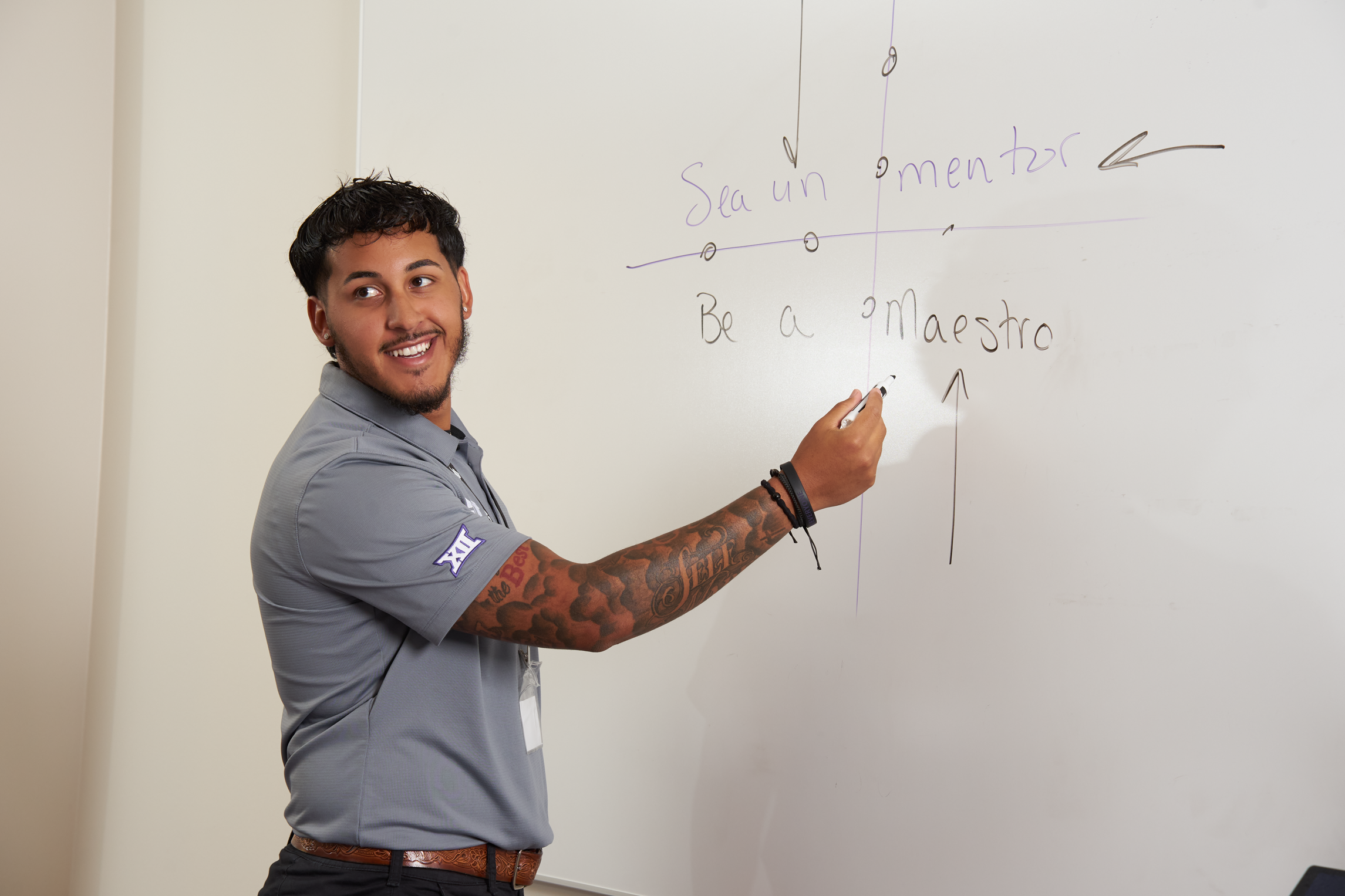Maestro Program

Only 2% of the teacher workforce consists of Hispanic males
Research shows that Texas faces a drastic shortage of Latinx males in the classroom. The Maestro Program was created to reach and recruit more prospective Latinx male teachers for K-12 teaching positions.
Now accepting Maestro applicants
Maestro is a new initiative to strengthen the diversification of Texas’ teaching force by recruiting, preparing, and supporting Latinx men to earn their degrees and teaching credentials.
This will mark an increase of Latinx men entering the teaching ranks, resulting in more Latino male teachers serving as role models for the youth whom they teach and guide — bringing more “windows and mirrors” to classrooms throughout Texas schools. Our aim is to close the gap by increasing the number of Latinx male teachers serving as role models and achieving social, educational, and financial stability.
To learn more about about the program or support the development efforts, contact Steve Przymus at s.przymus@tcu.edu or reach out to the College of Education at coe@tcu.edu
While 25% of national public-school students identify as Hispanic, only 2% of the teacher workforce consists of Hispanic males. In Texas, Shapiro and Partelow (2018) found that a gap of twenty-nine percentage points exists between Latinx teachers and Latinx students, making the state one of the four with the biggest Latinx teacher–student gaps. Of the approximately 4 million teachers in the United States today, 80% are White, 64% are White females, and 1.7% are Hispanic males. Regarding the entire student body, the United States has 1 White female teacher for every 15 students and 1 Latino male teacher for every 534 students (Miller, 2013).
Research shows that finances are the number one cause cited by Latino males for their decision not to pursue higher education. Stereotypes that suggest only females teach and low teacher salaries also keep Latino men from teaching. Less than 25% of the teaching force in Texas is male (all races), and most of them teach in high school. Texas faces a drastic shortage of Latino males in school classrooms, where they could be serving as role models and achieving social, educational, and financial stability.
Several specific obstacles prevent Latino male students from completing university-preparation certification programs:
- The cost of tuition, fees, and books and room and board
- Loss of income while attending school and clinical-teaching programs
- The need to support a family while attending school full time
- Lack of both support and incentive for entrance into a teaching profession
As part of the Maestro program, you'll have access to:
- Networking
- Unique, exclusive professional development
- One-on-one mentorship by local teachers
- Study abroad
- Scholarship opportunities
- And much more!
Fill out the form below to start the process of applying to be a Maestro.
If you would like to stay up-to-date with this new program, please tell us a little about yourself.